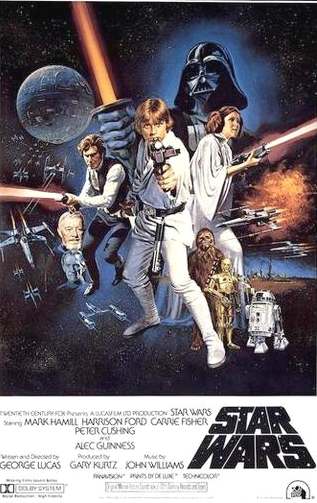


I walked into Finnegan’s Toy Store in downtown Portland earlier this month to try to gather some ideas for this exhibition. As I entered the store, my heart instantly started beating a little faster, a small grin crept across my face, and images of my childhood clouded my vision. Now, we all know this feeling, no matter the age, because the reality is, we were all little kiddos at one time, and nothing can ever replace that feeling.
Primary Colors, as the tile suggests, reflects the busyness and imagination of young children. I wanted to portray a sense of innocence and simplicity. Additionally, I wanted to question the sense of value, because to a three year old a collection of lollypops is just as significant as a collection of African diamonds, or Van Gogh paintings. At what point do these collections become valueless; at what point do we realize that our best friend has button eyes and is filled with beans and fluff? To explore the idea of subjective value, the exhibit is handled in a very professional manner, showing great importance to the collections, and images displayed.
Each panel reflects a different interest/ theme: Friend, Bus Driver, Fire Fighter, Horticulturist,
Conductor, Paleontologist, and Sweet Tooth. These titles further push the idea of the boundlessness of a child’s imagination as well as a way to organize the exhibit.
The objects were gathered from the house of Lesa Benton and Laith Al-Aridh on Caruthers Street in SE Portland and the photos were taken on site as well. All of the objects date from 2006 to present. The toys are wired onto the panels for easy removal and return. Additionally, having them wired on further dissolves the toys real meaning and purpose. It also instills the theme that the objects are being displayed in the utmost importance - as if the toys are still in their original packaging.
While viewing the exhibition, you will hear portions of my interview with Aden, the main subject of the display. While they are informal, and more of background noise, I enjoy the childlike, innocence it adds to the strictly visual display.
Exhibit Catalog
Panel One: Friend
Plastic horse collection
Dog caricature
Photo portraits of old friends
Chopsticks/ Bug Pincher
Panel Two: Bus Driver
Trimet Bus Pass Collection
Photo Portrait of the Bus Driver
School Bus Toy
Panel Three: Fire Fighter
Portraits of the Fire Fighter
Fire Truck Toy
Hot Wheels Car
Panel Four: Horticulturist
Jungle Cats
Tree Frog
Portraits of the Horticulturist
Shovel
Rubber Ducky
Panel Five: Conductor/ Paleontologists
Train Sticker Collection
Wooden Trains
Dinosaur View Master Disc
Green Dinosaur Collection
Panel Six: Sweet Tooth
Ice Cream Sequence Photos
Colorful Ice Cream Spoons
Dum Dum Collection
Primary Colors, as the tile suggests, reflects the busyness and imagination of young children. I wanted to portray a sense of innocence and simplicity. Additionally, I wanted to question the sense of value, because to a three year old a collection of lollypops is just as significant as a collection of African diamonds, or Van Gogh paintings. At what point do these collections become valueless; at what point do we realize that our best friend has button eyes and is filled with beans and fluff? To explore the idea of subjective value, the exhibit is handled in a very professional manner, showing great importance to the collections, and images displayed.
Each panel reflects a different interest/ theme: Friend, Bus Driver, Fire Fighter, Horticulturist,
Conductor, Paleontologist, and Sweet Tooth. These titles further push the idea of the boundlessness of a child’s imagination as well as a way to organize the exhibit.
The objects were gathered from the house of Lesa Benton and Laith Al-Aridh on Caruthers Street in SE Portland and the photos were taken on site as well. All of the objects date from 2006 to present. The toys are wired onto the panels for easy removal and return. Additionally, having them wired on further dissolves the toys real meaning and purpose. It also instills the theme that the objects are being displayed in the utmost importance - as if the toys are still in their original packaging.
While viewing the exhibition, you will hear portions of my interview with Aden, the main subject of the display. While they are informal, and more of background noise, I enjoy the childlike, innocence it adds to the strictly visual display.
Exhibit Catalog
Panel One: Friend
Plastic horse collection
Dog caricature
Photo portraits of old friends
Chopsticks/ Bug Pincher
Panel Two: Bus Driver
Trimet Bus Pass Collection
Photo Portrait of the Bus Driver
School Bus Toy
Panel Three: Fire Fighter
Portraits of the Fire Fighter
Fire Truck Toy
Hot Wheels Car
Panel Four: Horticulturist
Jungle Cats
Tree Frog
Portraits of the Horticulturist
Shovel
Rubber Ducky
Panel Five: Conductor/ Paleontologists
Train Sticker Collection
Wooden Trains
Dinosaur View Master Disc
Green Dinosaur Collection
Panel Six: Sweet Tooth
Ice Cream Sequence Photos
Colorful Ice Cream Spoons
Dum Dum Collection
Update: luckily, Lesa and Laith (parents of Aden) loved my box so much that they are going to frame each panel and hang it up in Adens room (that is...after they replace his toys and figure out how to prevent aden from eating the dum dums)




























